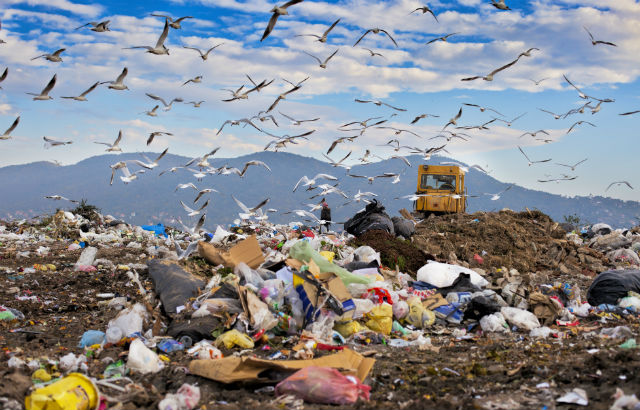
Photograph of a landfill site
The research, which focused on two historic landfills in the Thames Estuary, Hadleigh Marsh and Leigh Marshes, found that all solid waste materials analysed, even wood, paper and textiles, contained high levels of contaminants. The concentration of pollutants in the analysed waste exceeded environmental quality guidelines and this poses a significant hazard for the coastal environment if the sites were to erode.
Climate change could add to impact
Climate change and sea-level rise is increasing the likelihood that these historic coastal landfills will erode, leading to these solid waste materials, and their contaminants, being released into the marine environment.
It is estimated that there are more than 10,000 historic landfills in Europe that are vulnerable to flooding or erosion. Previous research at Queen Mary has indicated that there are c. 1200 such sites on England’s coastline, constructed prior to modern environmental regulation with little monitoring or knowledge of waste content, and some have already started to erode.
Historic waste has also been found to include materials that are physically or chemically harmful to ecological and public health such as asbestos, microplastics, heavy metals and hydrocarbons at concentrations that significantly exceed environmental quality guidelines.
Potential environmental hazards
Dr James Brand, Research Fellow at Queen Mary said: “This research shows historic landfills contain a variety of contaminated waste materials that could have a significant impact on the coastal environment if the landfills erode. Surprisingly these include materials that are generally considered harmless, such as wood, paper and textiles, which have soaked up high levels of pollutants whilst buried.”
Kate Spencer, Professor of Environmental Geochemistry at Queen Mary and project lead said: “Our previous research has shown 1 in 10 historic coastal landfill sites across the UK could begin eroding by 2055, we know that some have already begun to erode, but numbers are unclear. Unless these sites and their coastal defences are maintained or we find suitable technologies to remediate, relocate or recycle landfilled waste, we may well be looking at a serious environmental hazard.”
More information



